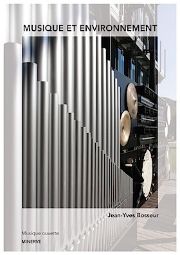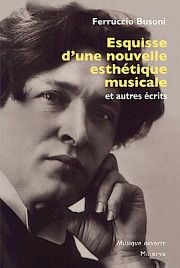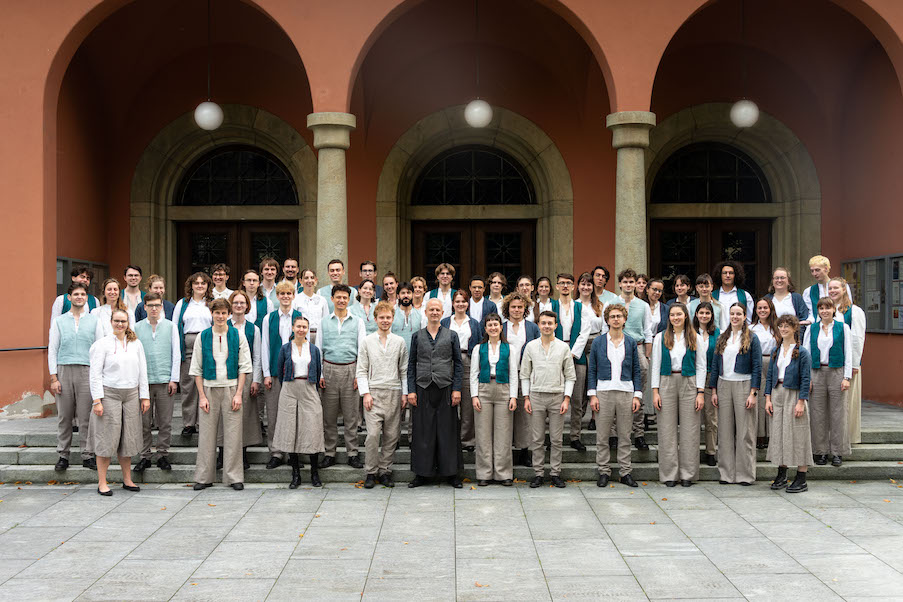Sounds and music without borders
The majority of Editions Minerve's catalog is devoted to music. Two recent publications are devoted to the interaction between music and the environment, and to the writings of Busoni.

In addition to a vast catalog of compositions in all genres, Jean-Yves Bosseur has also published numerous works and texts, mainly dedicated to contemporary music. In a recently republished book, he explores the relationships between sounds and the different environments in which they are embedded, not from a theoretical perspective, but rather by multiplying enlightening examples and explaining the approaches of numerous composers and designers. A great liberator, John Cage was one of the first to consider that the entire universe of sound is available, without discrimination. Following in his footsteps, others have willingly crossed the boundaries between music and noise, natural and artificial, everyday life and art, auditory and visual, temporal and static, often leading to a new awareness of the sound environment. Any place, urban or rural, with or without human intervention, can replace the concert hall; all sounds and noises, whether or not they are chosen, transformed or integrated into a work, can become objects of new listening. It would be impossible to list here the wealth of potentialities examined in this book: compositions or installations written in relation to the spatial and acoustic characteristics of a place, inclusion of sounds taken from the environment in a concert work, an ecosystem itself becoming music, dialogue between created and natural sounds, and many more. But sound can also become a harmful source of disease, or even a pernicious weapon of dissuasion, repression, torture or destruction; it can become a sound identity for a brand of everyday objects (musical design) or a functional signal, but also a music of mental manipulation, a phonic pollution formatting its listeners, like brainwashing, a permanent flow, for example in shopping malls, with no escape for employees or captive customers, in order to incite consumerism. Against this violent or syrupy ugliness, acousticians are trying to limit the psycho-social damage caused by noise, and musicians are trying to preserve the beauty of (relatively) silent soundscapes. The future cannot do without a musical ecology.
A composer too often neglected today, Ferruccio Busoni left writings that are sometimes more visionary than his musical works, especially his longest and most famous, Outline of a new musical aesthetic (1907), which opened the doors to 20th-century musical modernity, right up to microtonality and electroacoustic music. This new edition follows the essay with a transcription of the annotations added by Schoenberg, translated into French for the first time: reactions, additions and thoughts that become longer and more in-depth as the pages go by. Among the 32 other texts by Busoni selected for this collection, which also bear witness to the great freedom of his thought, several concern his own operas (and, by the same token, the operatic form in general) or his conception of the works of other composers (Bach and Liszt in particular). You'll also be delighted to read position statements on aesthetic issues and musical techniques, a paper on the use of third tones and a reflection on the essence of music.
Jean-Yves Bosseur: Musique et environnement, 244 p., € 24.00, Editions Minerve, Paris 2016, ISBN 978-2-86931-147-3
Ferruccio Busoni: Esquisse d'une nouvelle esthétique musicale et autres écrits, Introduction by Pierre Michel, Translated from the German by Martin Kaltenecker, Paul Masotta, Daniel Dollé and Pierre Michel, 228 p., € 22.00, Editions Minerve, Paris 2018, ISBN 978-2-86931-149-7










